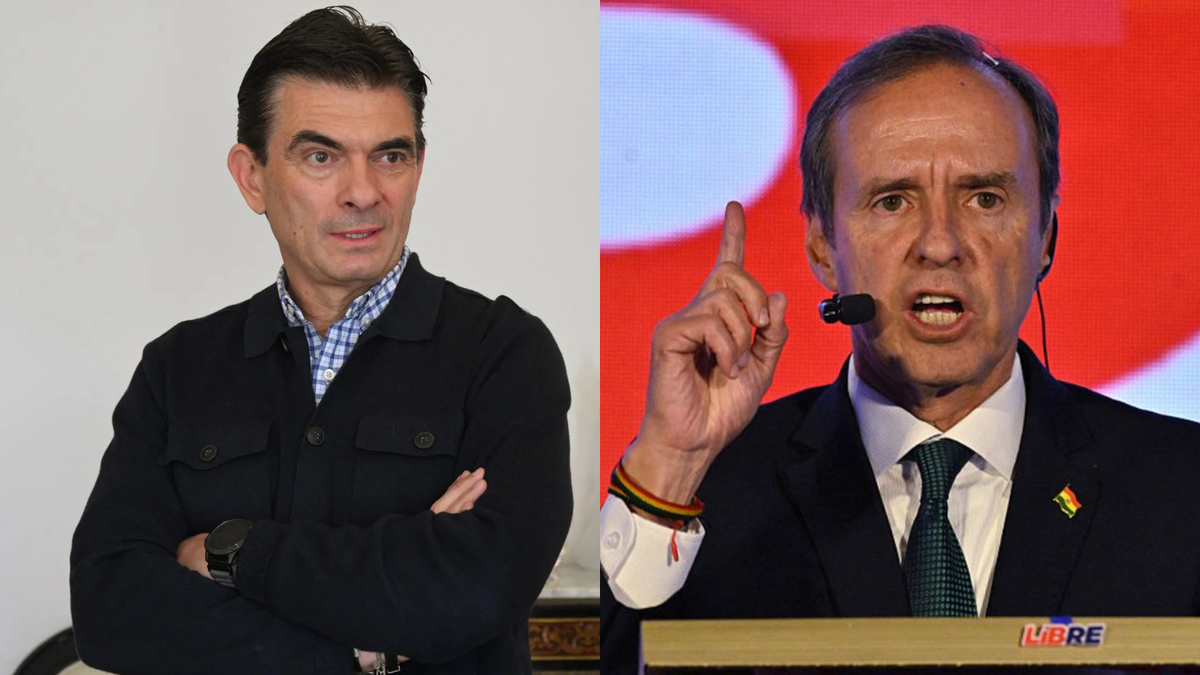Javier Milei’s first year: main economic achievements
Strong reduction in inflation
The drop in the CPI from 25.5% in December, to around 2.7% last October, is probably one of the Government’s greatest achievements. Milei’s economic management was marked by an important fiscal and monetary adjustment, and an exchange rate policy that maintained a crawling peg of 2% monthly over the months. These guidelines, together with the recession of the economy, -and despite the upward adjustment of public service rates-, led to a brake and abrupt decline in the inflationary process that had been accelerating – since the last years of the administration of then President Alberto Fernández, and the Minister of Economy, Sergio Massa – and that was deepened with the devaluation of 54% of the peso on December 13, 2023, at the start of the libertarian administration (the official dollar went from $366.45 to $800, with a parallel of $1,070, the same levels as today, after touching $1,500 last July). Let us remember that in January the CPI moderated to 20.6%, in February to 13.2%, in March to 11% and in April it began to be in single digits, with 8.8%. Already in May there was another sharp drop to 4.2%, and then it continued to decline – with some resistance at 4% – until it was below 3% at present. “There is a consensus that the fiscal balance was fundamental, but equally or more important was the policy of 2% monthly devaluation, which indicates that the official exchange rate was the nominal anchor that managed to coordinate expectations and give credibility to the anti- inflationary, which has been working very well”, evaluated from Econviews.
Exchange rate pax and reduction of the gap to almost zero
With ups and downs and some resistance until mid-year (when it reached a management peak, at almost 60%, with a blue dollar of $1,500), the reduction of the spread between the official and parallel exchange rates to almost zero It is another positive point of the Government. To achieve this, he decided close all monetary emission tapseven the one he used to buy export dollars. In the middle of the year, he determined that part of the dollars he acquired in the official market would later be sold in the Cash with Settlement (CCL) to reabsorb the pesos issued. Also helped by the “blend” dollar, money laundering and the “carry trade”, the price of the parallel dollar did not stop falling. Thus, the blue price aims to close 2024 with a rise of around 10%, well below inflation, which will be closer to 120%.
Unprecedented fiscal and monetary adjustment
The Milei administration achieved a fiscal milestone, by achieve a primary surplus in public accounts in 2024 for the first time in 15 years (it would be 1.5% of GDP). The chainsaw that was applied to public spending is unprecedented in recent history: expenditures contracted almost 30% in real terms in 2024 until October. It had been one of his campaign promises. It is “the central pillar on which confidence in its management rests,” they noted from GMA Capital. The surprise for many was that this important adjustment not only did not cause a social collapse, but Milei maintains high support from public opinion one year after his inauguration. The Government also ordered a strong monetary adjustment, by transferring the liabilities of the Central Bank to the Treasury, which implies that the monetary authority has less pressure to issue pesos.
Collapse of country risk and strong revaluation of Argentine assets
The improvement in Argentina’s fiscal situation positively leveraged investor sentiment, which was directly reflected in country risk. The index prepared by JP Morgan was located at 1,920 points a year agowith Hard Dollar bond parities around 35%, while today it is positioned at 740 points (-60%), values not seen since the first half of 2019. On the other hand, if the performance is measured since the result of the second electoral round was known in November of last year to date, the S&P Merval accumulates a jump of 176% in dollars, which brought about an increase in the market capitalization of around US$82,000 million, according to IEB Group calculations. In that same period, Sovereign debt increased its value by 152%, reaching US$44 billion. Thus, the total effect derived from the increase in the value of Argentine assets, both variable income and fixed income, would then be reached US$236,000 million (another US$96,479 million of revaluation of the sovereigns in pesos, US$13,055 million of the Bopreales are added), with which this Total stock market “wealth effect” would represent approximately 43% of GDP, according to IEB Group.
The return of credit
Financing to the private sector recovered in 2024, to the point that it is on its way to achieve its first real increase in six years. Exchange stability and an improvement in the main macroeconomic variables drove a notable increase in credit lines, both in pesos and dollars. In any case, Argentina still maintains a low percentage of credit in relation to its GDP (it barely represents 8% compared to more than 30% regional average). The real balance of total credit, both in pesos and in dollars to the private sector, accumulates a real year-on-year growth of 12%.
Milei Economy: Main Negative Effects
Economic recession and slow recovery
The disinflation process was also induced by a strong recession that reached its bottom between March and April, and then began a tenuous recovery, with ups and downs, and far from the “V” shape that the Government predicted. 2024 will close with a contraction close to 3%, but this will be accentuated for sectors that depend on the domestic market. “Both due to the fiscal and monetary contraction, as well as the lack of a productive policy (the RIGI has not yet had concrete effects), and income, the economic policy generated a recession that, for the sectors of the internal market, will be around 6% year-on-year drop. “There are not many precedents in other countries with contractions of that magnitude, which do not have to do with major global or directly humanitarian crises, such as wars or natural disasters,” said Martín Kalos, director of EPyCA Consultores.
Loss of purchasing power of employees and retirees
The drop in activity was also associated with the loss of purchasing power of pensions and salaries (with various speeds and dimensions), due to the inflationary process and the increase in rates due to the removal of subsidies. “Formal private salaries at the beginning of Milei’s government were the lowest in the last 12 years and pensions were the lowest since 2010. An unprecedented adjustment was imposed on that critical level of income, which explains the difficulties that the economy has today. to recover,” recalled economist Pablo Moldovan, Director of CP Consultora. According to the INDEC state salaries lost 16.1% in the first ten months of the Milei era. In parallel, The estimate for informal workers indicates a drop in purchasing power close to 17% between December of last year and April of this year. The least affected are the registered salaries of the private sector, which have accumulated a decrease of 2.4% in the Milei era.
Growth of poverty and indigence
As a result of the inflationary acceleration in the first months of administration, and the consequent abrupt fall in real wages, the Poverty levels exceeded 55% in the first quarter, and they reached a level not seen in two decades. Although these records are moderating, given the (slow) recovery of real wages, the indicator could remain above 45% at the end of 2024, that is, at still very high levels.
Sharp drop in mass consumption
The consumption of food and other goods suffered a significant drop in 2024, due to the impact that some measures implemented during Milei’s management had on households, aimed at achieving macroeconomic stabilization. In the first quarter of the year there was a contraction of consumption of greater magnitude, which reached a drop of around 30% in both supermarket and self-service sales, as well as in retail stores of different items, according to data from INDEC and CAME. In any case, towards the last quarter of the year, a slowdown in the fall in consumption began to be seen: according to the latest CAME measurement, SME retail sales fell 1.7% annually and grew 3.9% monthly in November, and accumulate a decrease of 12.2% in the first eleven months of the year.
Milei Economy: pending accounts 2025
By 2025, Milei and his economic team will have several challenges and will inevitably have to face them, given the underlying fragility that the Argentine economy still maintains.
Exchange stocks
In the market, there is consensus that a weak point of the economic program is the slowness in definitively lifting restrictions on the dollar. In the first instance, it had been planned to end it last June, but the date moved forward as the months went by, along with the addition of basic conditions to end the trap. Now, the market consensus believes that it will only rise after the legislative elections in October next year.
Renegotiate the agreement with the IMF
The Government must deepen negotiations with the IMF to reach a new agreement that refinances the current program in the longer term, with the possibility of including “fresh funds” in the new deal, which will be key to getting out of the trap.
Central Bank Reserves
Another weak point has been the recomposition of international reserves, which remain negative. They went from -11 billion dollars at the end of last year to about -5 billion dollars recently. Although these numbers represent an improvement, they are far from having returned to positive values. This situation has led the Government to be very cautious with a possible lifting of the exchange rate. In recent months the Central Bank has accumulated dollars again, although a large part is “due to private sector debt and not due to a surplus in the current account, which is more sustainable,” they explained from Econviews.
Exchange appreciation
Among the risks that appear on the not-too-distant horizon is that of the greatest weight appreciation, that is on its way to becoming the currency that strengthened the most against the dollar in the world during 2024. “The anti-inflationary plans based on the exchange rate, which almost inexorably ended in turbulence. The fact that the macro is more solid minimizes the chances of a crisis. But at some point a policy of exit from the exchange rate rigidity. Let’s hope that the Government is aware of that and does not fall in love with the fixed exchange rate,” they warn from Econviews.
May the rebound in economic activity be felt in “the street”
The challenge of 2025 for the Government is that the macro numbers finally go down to the micro, and above all they are felt in mass consumption, one of the segments that most felt the adjustment of economic policy. “The pending issue is to achieve a sustained recovery, with a growth process led by investment and the dynamism of the tradable sectors. For now, we have a rebound driven more than anything by the recovery of durable consumption, hand in hand with the rebound in the credit and real wages”said Gabriel Caamaño Gómez, director of the consulting firm Outlier.
Source: Ambito
David William is a talented author who has made a name for himself in the world of writing. He is a professional author who writes on a wide range of topics, from general interest to opinion news. David is currently working as a writer at 24 hours worlds where he brings his unique perspective and in-depth research to his articles, making them both informative and engaging.




